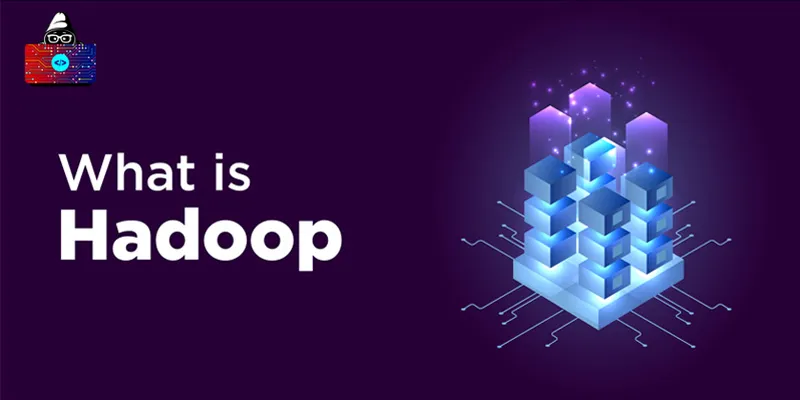The amount of data generated each day is simply overwhelming. With the increasing rate of data generation, there arises the need for a system that organizes and processes large amounts of data in a jiffy. Hadoop is one such platform that manages, stores, and processes large volumes of data sets quickly.
This article will help you understand the Hadoop framework and its different components. Also, we will highlight the key benefits of Hadoop and discuss why companies opt for Hadoop instead of traditional systems. So, let us get started!
What is Hadoop?
Hadoop, also known as Apache Hadoop, is a robust and open-source framework for storing and processing large volumes of datasets of any size, from gigabytes to petabytes. The primary idea behind this framework is that it clusters multiple computers or machines to store massive amounts of data sets and yet provides an impression of a single working system.
Hadoop distributes datasets across several machines and processes them simultaneously. Hence, Hadoop is a highly scalable framework that manages and processes data quickly in a distributed environment.
Licensed under the Apache License 2.0, Doug Cutting and Micheal J. Cafarella are the developers of Hadoop while Apache Software Foundation manages its source code. Hadoop uses the MapReduce programming model for quick storage and retrieval of data.
Components of Hadoop
The Hadoop framework consists of multiple components that are categorized into two parts, namely Core and Supplementary. In general, there are four core components of Hadoop that are as follows:
1. Hadoop Distributed File System (HDFS)
HDFS is the core of the Hadoop framework. It is a distributed file system that enables the Hadoop framework to replicate and store data across multiple machines or computer devices in a cluster.
There are five services in HDFS, out of which three are Master Services, and the remaining two are Slave Services. Master or Daemons Services are NameNode, Secondary NameNode, and Job Tracker. On the other hand, Slave Services are Data Note and Task Tracker.
- NameNode
There is only one NameNode in the HDFS cluster, which is also referred to as the Master node. It is responsible for managing the file system and tracking files, and it holds the metadata of the data stored in DataNodes. NameNode stores information about the list of blocks and their locations in HDFS. When the NameNode is down, the HDFS cluster is also down.
- Secondary NameNode
This master node concentrates on the checkpoints of the metadata present in the NameNode. Hence, it is also called the Checkpoint Node.
- Job Tracker
A client sends a request to Job Tracker regarding the execution of MapReduce. Upon receiving a request, the Job tracker communicates with the NameNode and asks for the location of data to be processed. Further, the NameNode responds with the required data’s metadata to the Job Tracker.
- DataNode
It is a Slave Service that stores the actual data as blocks in the HDFS cluster. DataNode is a slave of NameNode and is responsible for transmitting a Heartbeat message to NameNode after every 3 seconds, indicating that it is alive.
If the NameNode does not receive any Heartbeat message for around 2 minutes from the DataNode, it considers DataNode as dead. Further, NameNode replicates all blocks of that dead DataNode to another one.
- Task Tracker
The slave node of Job Tracker is Task Tracker. It receives tasks from the Job Tracker and carries out Mapper and Reducer tasks on DataNodes.
2. Yet Another Resource Negotiator (YARN)
The next core Hadoop component is Yet Another Resource Negotiator (YARN). It was launched in Hadoop 2.0 and was known as Redesigned Resource Manager. Now, it is a distributed operating system for Big Data processing.
YARN is responsible for managing and scheduling resources for various applications. In addition, it also decides what should happen in each DataNode of HDFS. There are four components of YARN, as listed below:
- Resource Manager
There is a single Resource Manager for each DataNode, and it is responsible for managing and allocating resources to all applications. It has two different components: scheduler and application manager. The scheduler schedules the allocation of resources as requested by applications, and the application manager controls the Application Master.
- Node Manager
Node Manager is responsible for managing each node in the HDFS cluster. In addition, it regulates the usage of the resource, kills a container as directed by the Resource Manager, and implements log management.
- Application Master
When any job is submitted to the Hadoop framework, it is called an application. Application Master in YARN is responsible for tracking application status, regulating the application process, and negotiating with the resource manager about resources.
The Application Master requests for Container Launch Context (CLC) from the Node Manager. CLC consists of everything needed for an application to run. Upon receiving the CLC, the application starts running. Moreover, Application Master reports an application’s status time-to-time to the Resource Manager.
- Container
A container in YARN consists of physical resources, such as CPU cores, RAM, and a disk on a single node. Container Launch Context (CLC) is a record that contains information about environment variables, dependencies, and security tokens. It is responsible for invoking containers.
3. MapReduce
The third Hadoop component is MapReduce. It is a programming model that processes large data sets across multiple computers or machines. There are two fundamental functions in MapReduce: Map() and Reduce(). The Map() function groups multiple data sets together, filters and sorts the data, and transforms it into the tuple or ‘key/value’ pair format.
This key/value pair, an output of the Map() function, acts as an input to the Reduce() function. It takes data tuples from the Map() function and combines them to form a small data set.
4. Hadoop Common
It is a collection of Java libraries and utilities that supports all other Hadoop modules. Some extensively used supplementary components of Hadoop are:
- Hive , a data warehouse system in Hadoop that processes structured data. It provides an interface similar to SQL to query large data sets stored in a distributed environment.
- HBase , a distributed, non-relational, and column-oriented database system in Hadoop. It stores scattered and unstructured data sets and does not support a structured query language.
- Zookeepe r, a centralized service for offering configuration information, naming, synchronization, and group services to clusters in HDFS.
- Pig , a high-level scripting language used to create programs that can run on Hadoop clusters.
- Flume , a distributed data collection tool used for transferring streaming data from different sources into HDFS.
- Sqoop , a tool that transfers large data sets between structured data stores, like relational databases and Hadoop.
Benefits of Hadoop
Here are some significant benefits of working with the Hadoop framework:
1. Supports Different Data Formats
Traditional databases, like relational databases or data warehouses, can handle only structured data. Thus, it becomes challenging for them to manage the heterogeneity of modern data. Along with structured data, Hadoop also supports unstructured and semi-structured data, like text, audio, videos, logs, Facebook posts, etc. With the rise of Big data, which consists of unstructured data, Hadoop’s demand has also increased significantly.
2. Data Volume
When it comes to capacity, Hadoop is capable of storing data in petabytes, whereas relational databases store data in gigabytes. Therefore, Hadoop is ideal for storing and processing large data sets, whereas relational databases are best for data sets that are small in size.
3. Resilience
In the Hadoop framework, there is always a backup for the data stored in each node. As a result, if any node goes down, there is nothing to worry about, as the data is replicated and stored in another node of the cluster.
4. Scalability
Hadoop offers horizontal scalability, which is referred to as ‘Scaling Out’ a machine. Scaling out a machine means adding more machines or computer devices to the existing cluster. Therefore, Hadoop does not have a point of failure.
Even if one machine fails, you can easily recover any lost data. Unlike Hadoop, relational databases offer vertical scalability, which is called ‘Scaling Up’ a machine. Scaling up a machine means adding additional resources, such as CPU or memory, to a computer device or machine in a cluster.
5. Open-source and Cost-effective
Hadoop is an open-source framework, enabling users to download its source code and modify it as per their requirements. There is no need to purchase a license for using Hadoop. On the other hand, relational databases require you to purchase a license.
Furthermore, Hadoop is a cost-effective solution for data storage. It stores data in a cluster of commodity hardware. Commodity hardware is inexpensive machines or computer devices that are available widely.
6. Speed
In terms of speed, Hadoop has no competition. The MapReduce model, concurrent processing, and distributed file system of Hadoop enable quick processing of any complex task or query. Hadoop divides a single task into multiple sub-tasks and assigns each sub-task to worker nodes that contain the data required to complete the task.
These multiple sub-tasks run simultaneously on different nodes, hence accomplishing a task in a matter of seconds.
Conclusion
Due to the diverse applications and robust ecosystem of the Hadoop framework, many renowned companies, like Amazon, IBM, Microsoft, etc., are using it. With the rising popularity of Big Data and extensive adoption of the Hadoop framework worldwide, IT professionals can have excellent career opportunities in the Big Data domain.
Therefore, learning Hadoop will be beneficial if you want to build a successful career in data science . There are no prerequisites to learning Hadoop, but having the basic knowledge of database management systems and programming languages, like Python, Scala, or Java, would be an added advantage.
People are also reading:





Leave a Comment on this Post